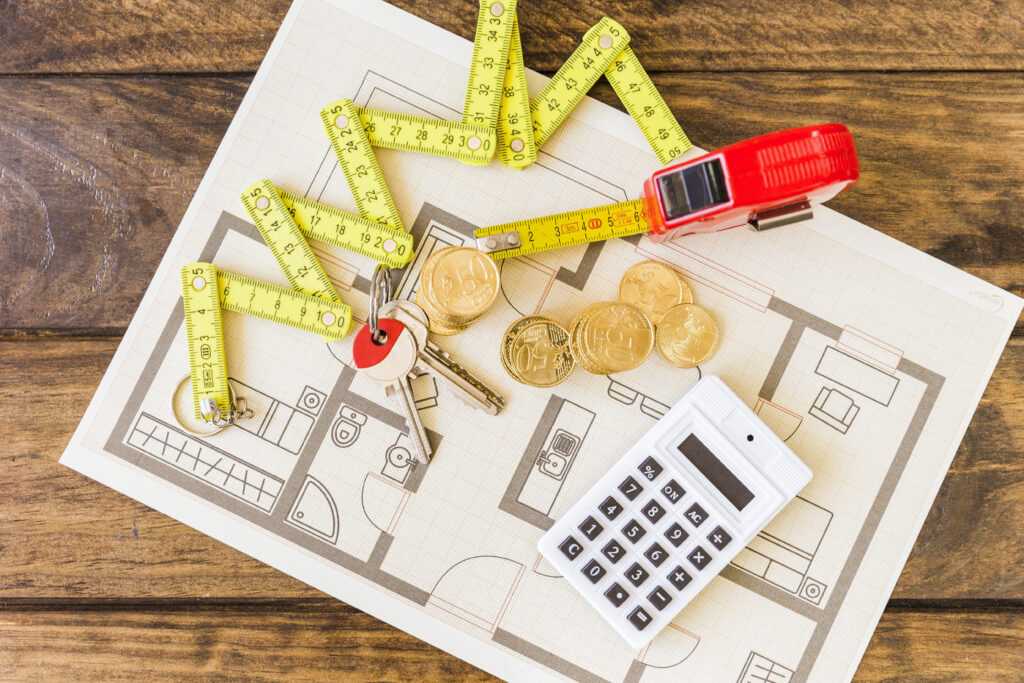Home renovation has become more popular than ever, but so have the associated costs. With inflation, supply chain issues, and labor shortages affecting prices in 2025, many homeowners are searching for smarter ways to complete their projects without draining their savings. Whether you’re tackling an old home renovation, planning a full-scale remodel, or just refreshing a single room, understanding your home renovation cost upfront is essential. In this guide, we’ll share cost-saving tips that apply to every kind of home renovation, so you can stay on budget while still achieving your dream design.
1. Plan Thoroughly Before You Start

Before swinging a hammer or buying materials, proper planning can save you thousands. Start by determining your overall home renovation budget and define what you want to achieve. Break down the scope room by room or task by task. Use free digital tools and mobile apps to test different layouts and visualize your home renovation design before committing.
Always get multiple home renovation estimates from licensed contractors—three is a good minimum. This not only helps you compare pricing but also gives you insight into how different professionals approach the job. Be sure to build a contingency fund of 10–20% of your total budget to cover unexpected issues that often arise during construction.
2. Prioritize Projects That Add Value
Not all upgrades are created equal. When it comes to smart budgeting, focus on renovations that offer the best return on investment. Kitchen remodels, bathroom upgrades, and improving curb appeal typically top the list. These types of renovations not only improve your day-to-day living but also increase the resale value of your property.
Avoid over-renovating or spending more than what’s typical in your neighborhood. A luxury kitchen might be tempting, but if you live in a modest area, the home renovation cost may not be justified when it’s time to sell. Being strategic helps you stick to a practical home renovation budget.
3. Choose Cost-Effective Materials

Material choices can make or break your renovation budget. Fortunately, 2025 offers more affordable and high-quality alternatives than ever before. Instead of expensive hardwood flooring, consider engineered wood or luxury vinyl plank. Love the look of stone countertops? Laminate and quartz offer durability and style without the premium price tag.
Buying materials in bulk or waiting for seasonal sales can also cut costs significantly. Check out local suppliers for clearance items or surplus stock. If you’re doing an old home renovation, reclaimed materials can give your project character while slashing expenses.
4. DIY Where You Can, Hire Where You Must

Taking a hands-on approach is one of the best ways to reduce home renovation costs—if done wisely. Painting, demolition, basic landscaping, or installing fixtures are great tasks for homeowners willing to learn. Just be sure to do thorough research or follow step-by-step video tutorials.
However, some jobs should always be left to licensed professionals. Electrical work, plumbing, structural changes, and anything requiring permits should be handled by experts. Cutting corners here can lead to costly mistakes and safety hazards. A balanced approach—DIYing the easy tasks and hiring out the complex ones—is key to saving without compromising quality.
5. Reuse and Repurpose Existing Elements
Before you gut your space, take inventory of what you already have. Many items can be salvaged and given new life, especially during an old home renovation. Solid wood cabinets can be sanded, painted, or refaced instead of replaced. Existing hardwood floors can be refinished rather than torn out. Vintage light fixtures can be rewired and restored for a stylish, sustainable upgrade.
Not only does repurposing save money, but it also adds a unique charm and story to your home. It’s an eco-friendly choice that fits beautifully with today’s design trends in home renovation.

6. Time Your Renovation Right
When you schedule your renovation can influence the final cost. Spring and summer are peak seasons for contractors, which often leads to higher pricing and longer wait times. If your timeline is flexible, consider scheduling your home renovation during the fall or winter months when demand is lower and labor may be more affordable.
Suppliers and stores often offer end-of-season sales or clearance deals at the start of the year. Taking advantage of these promotions is a great way to shave dollars off your home renovation budget without compromising on quality.
7. Leverage Tax Credits, Rebates & Incentives

Many homeowners overlook potential savings through government-backed programs. In 2025, there are still federal and state tax credits available for energy-efficient renovations—like solar panel installations, new insulation, and ENERGY STAR-rated windows. These upgrades may cost more upfront but deliver long-term savings on your utility bills and qualify for rebates or deductions.
Check with your local utility company or municipal office to see what’s available in your area. These financial incentives can offset your home renovation cost significantly and may even cover the extra expense of going green.
Conclusion: Renovate Smart, Save Big
Home renovation doesn’t have to mean going over budget or sacrificing quality. With thoughtful planning, smart material choices, and a willingness to be hands-on, you can stretch your home renovation budget and still achieve beautiful, functional results. Whether you’re tackling a full home overhaul or a targeted old home renovation, every decision you make impacts your final cost.
Don’t rush—research your options, get accurate home renovation estimates, and always prioritize value over trend-chasing. By using these smart tips in 2025, you’ll not only save money but also increase your home’s comfort, efficiency, and market value.
Have a renovation tip or budget hack that worked for you? Share it in the comments below!



